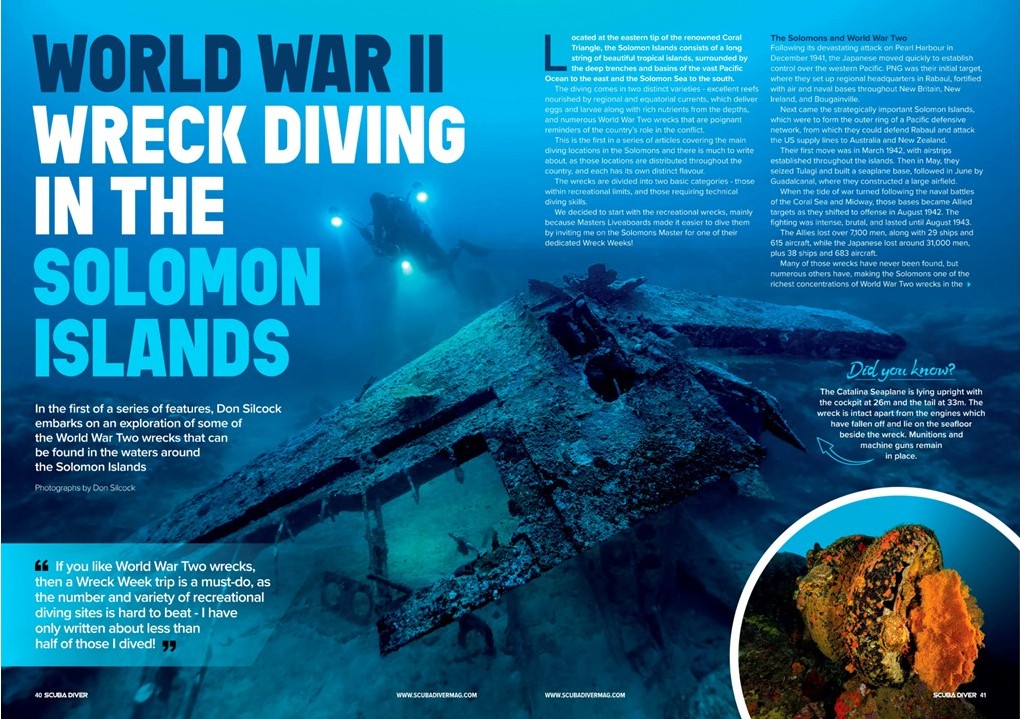Diving the Solomon Islands WWII Wrecks… Located at the eastern tip of the renowned Coral Triangle, the Solomon Islands consists of a long string of beautiful tropical islands, which are surrounded by the deep trenches and basins of the vast Pacific Ocean to the east and the Solomon Sea to the south.
The diving comes in two distinct varieties. Excellent reefs nourished by regional and equatorial currents, which deliver eggs and larvae along with rich nutrients from the depths. And numerous WWII wrecks that are poignant reminders of the country’s role in WWII. Those wrecks can be divided into two basic categories… Those within recreational limits and those requiring technical diving skills.
This is the first in a series of articles covering the main diving locations in the Solomons. There is much to write about, as those locations are distributed throughout the country. And each has its own distinct flavour.
I decided to start with the recreational wrecks. Mainly (in full disclosure) because Master Liveaboards made it easier to dive them by inviting me on the Solomons Master for one of their dedicated WWII Wreck Weeks!
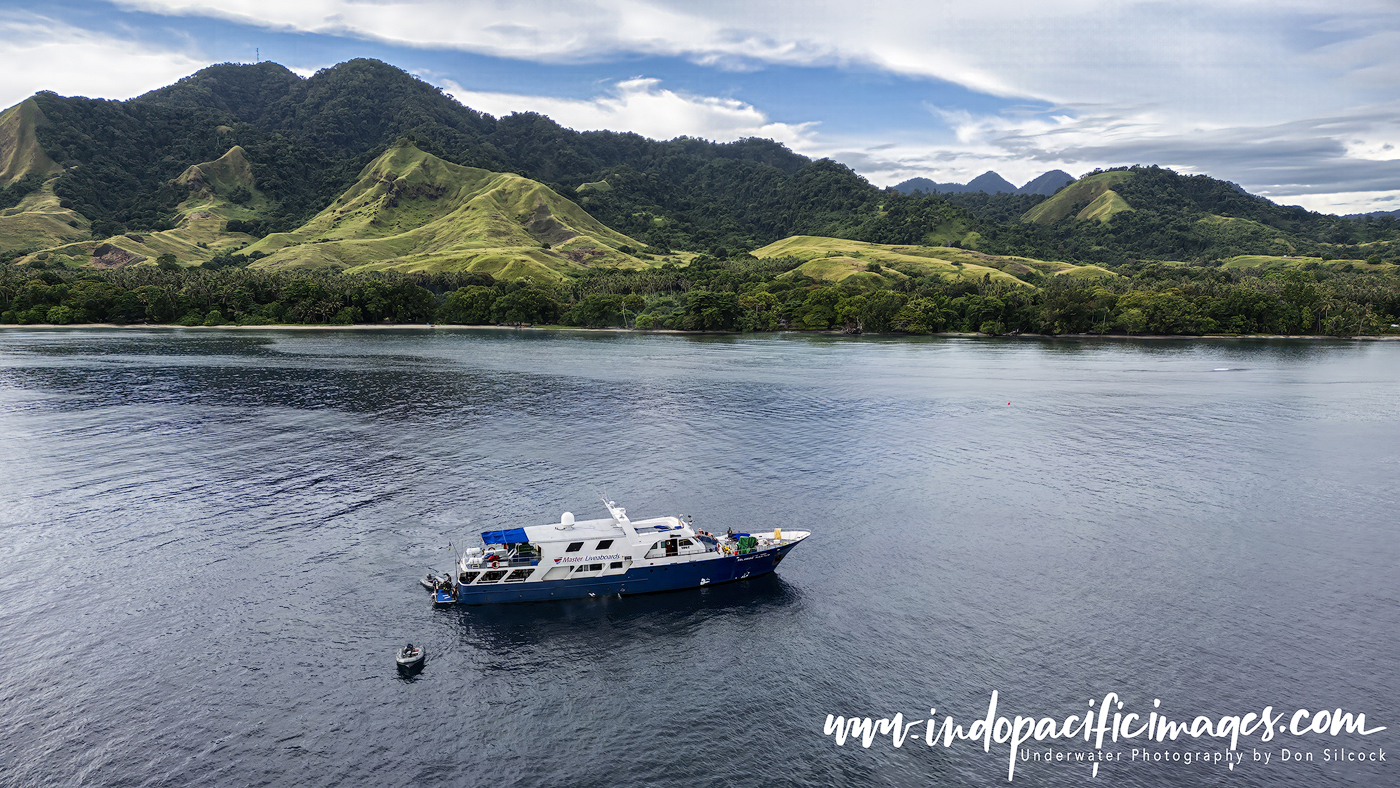
Diving the Solomon Islands WWII Wrecks
Following its devastating attack on Pearl Harbor in December 1941, the Japanese moved quickly to establish control over the western Pacific. Papua New Guinea was their initial target. Where they set up regional headquarters in Rabaul. Fortified with air and naval bases throughout New Britain, New Ireland, and Bougainville.
Next came the strategically important Solomon Islands, which were to form the outer ring of a Pacific defensive network. From which they could defend Rabaul and attack the US supply lines to Australia and New Zealand. Their first move was in March 1942, with airstrips established throughout the islands. Then in May, they seized Tulagi and built a seaplane base. Followed in June by Guadalcanal, where they constructed a large airfield.
When the tide of war turned following the naval battles of the Coral Sea and Midway, those bases became Allied targets as they shifted to offense in August 1942. The fighting was intense, brutal, and lasted until August 1943. The Allies lost over 7,100 men, along with 29 ships and 615 aircraft,. While the Japanese lost around 31,000 men, plus 38 ships and 683 aircraft.
Many of those wrecks have never been found. But numerous others have, making the Solomons one of the richest concentrations of WWII wrecks in the world. So many ships were lost during the Guadalcanal campaign that the area north of Honiara, became known as “Iron Bottom Sound.”
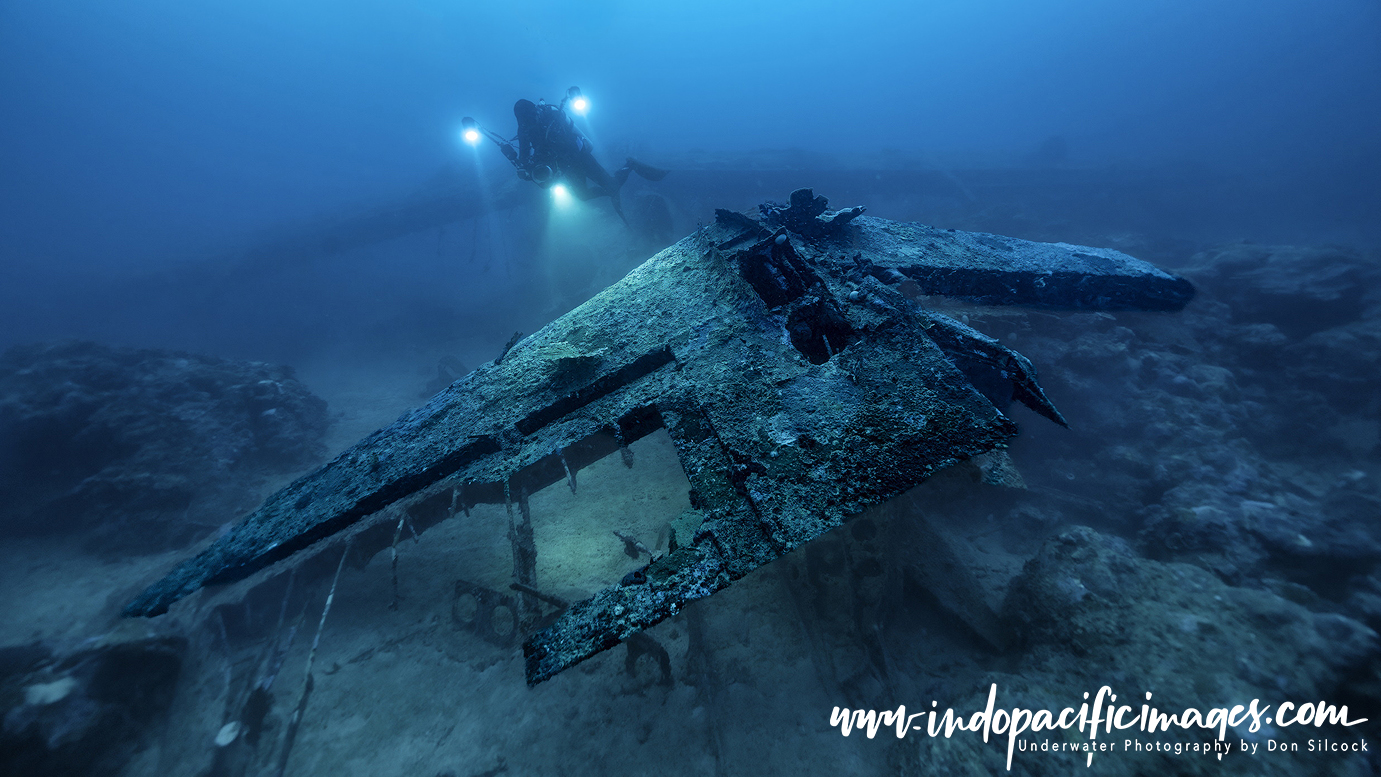
Diving the Solomon Islands WWII Wrecks – The Main Areas
The wrecks in and around Iron Bottom Sound are randomly distributed across an area of some 7,000 km². The only way to dive those within recreational limits on a single trip is from a liveaboard. Which the Masters Wreck Week is designed to do – and it works very well!
The Russell Islands
Located about 100 km northwest of Honiara, the Russell’s are a small archipelago of two main islands, Pavuvu and Mbanika, and over 50 smaller islands. Further northwest is the large island of New Georgia – the next target after victory in Guadalcanal. Making the Russell’s very strategic for the Allies as they prepared for the next campaign.
In February 1943, the archipelago was occupied and transformed into a forward operating base with roads, radar station, PT boat base, housing, hospital facilities, and airfields. Prior to WWII, fewer than 350 people lived there. But under the Allies, the area became a boomtown with, at its peak, more than 16,000 personnel stationed there.
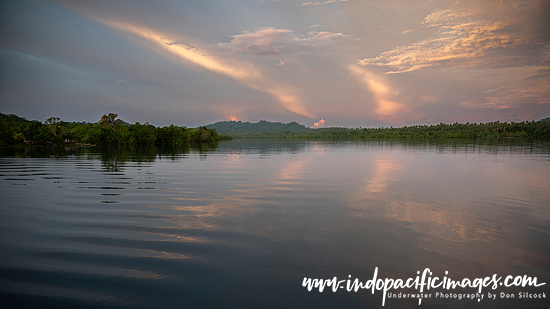 White Beach: The first thing to know about the main “wreck” site at the Russell’s is that there isn’t a white beach…
White Beach: The first thing to know about the main “wreck” site at the Russell’s is that there isn’t a white beach…
White Beach was the Allied code name for their initial landing site.
When they finally left in 1945, everything that could not fly was dumped off the main jetty. And the barges that formed it were scuttled!
This WWII scrapyard is now an artificial reef, with everything from trucks, jeeps, tractors, and bulldozers to large amounts of ammunition and Coca-Cola bottles.
All located in 5 to 30 meters of water – just off the shore…
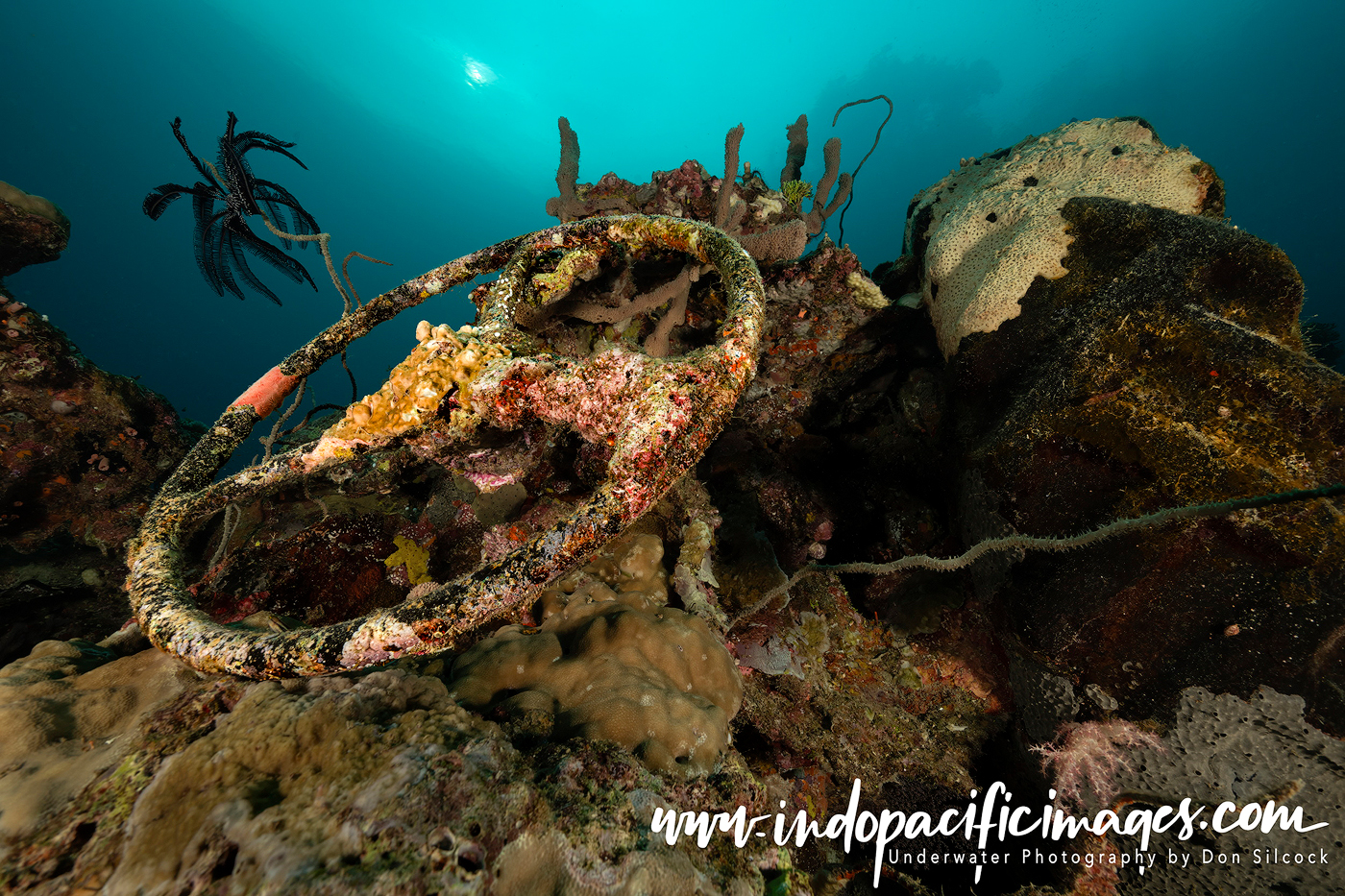
The Florida Islands
This small group of islands sits roughly halfway between Guadalcanal and Malaita and consists of two larger islands, Nggela Sule and Nggela Pile, separated by the narrow Mboli Passage. There are also a number of smaller islands, the most significant being the former capital of Tulagi. Post-independence, the group became known as the Nggela Islands, but most people still refer to them as the Florida Islands.
There are numerous WWII wrecks around the islands, including my favourite, the HMNZS Moa…
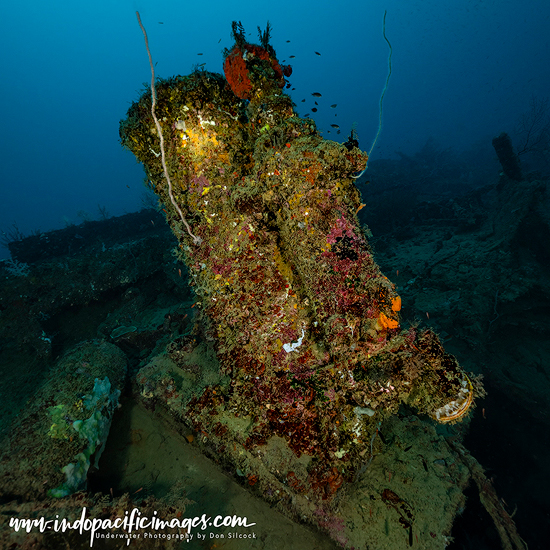
HMNZS Moa: In December 1942 the New Zealand Navy deployed three “Bird Class” minesweepers to Guadalcanal, the Moa, Kiwi and Tui, all based from Tulagi and assigned to anti-submarine patrols.
The Moa and Kiwi saw major action at the end of January 1943 when, working in tandem, they sank the Japanese submarine I-1 (see below).
In early April of 1943, the Moa came under heavy attack from Japanese aircraft while being refuelled near Tulagi harbour.
She was hit twice with 500lb bombs. And sank within minutes with the loss of five lives and 15 wounded.
The Moa is a fairly deep dive as she sits on a silty bottom in 40m. With the bow submerged in the mud, but is easily covered on a single dive.
The superstructure, made of timber overlaid with brass, was “liberated” during the the late 1970’s salvage era.
The key things to see are the large 4” gun mounted on a raised platform near the bow. The iron propeller (no salvage value..) and rudder together with the twin depth charge racks on the main deck.
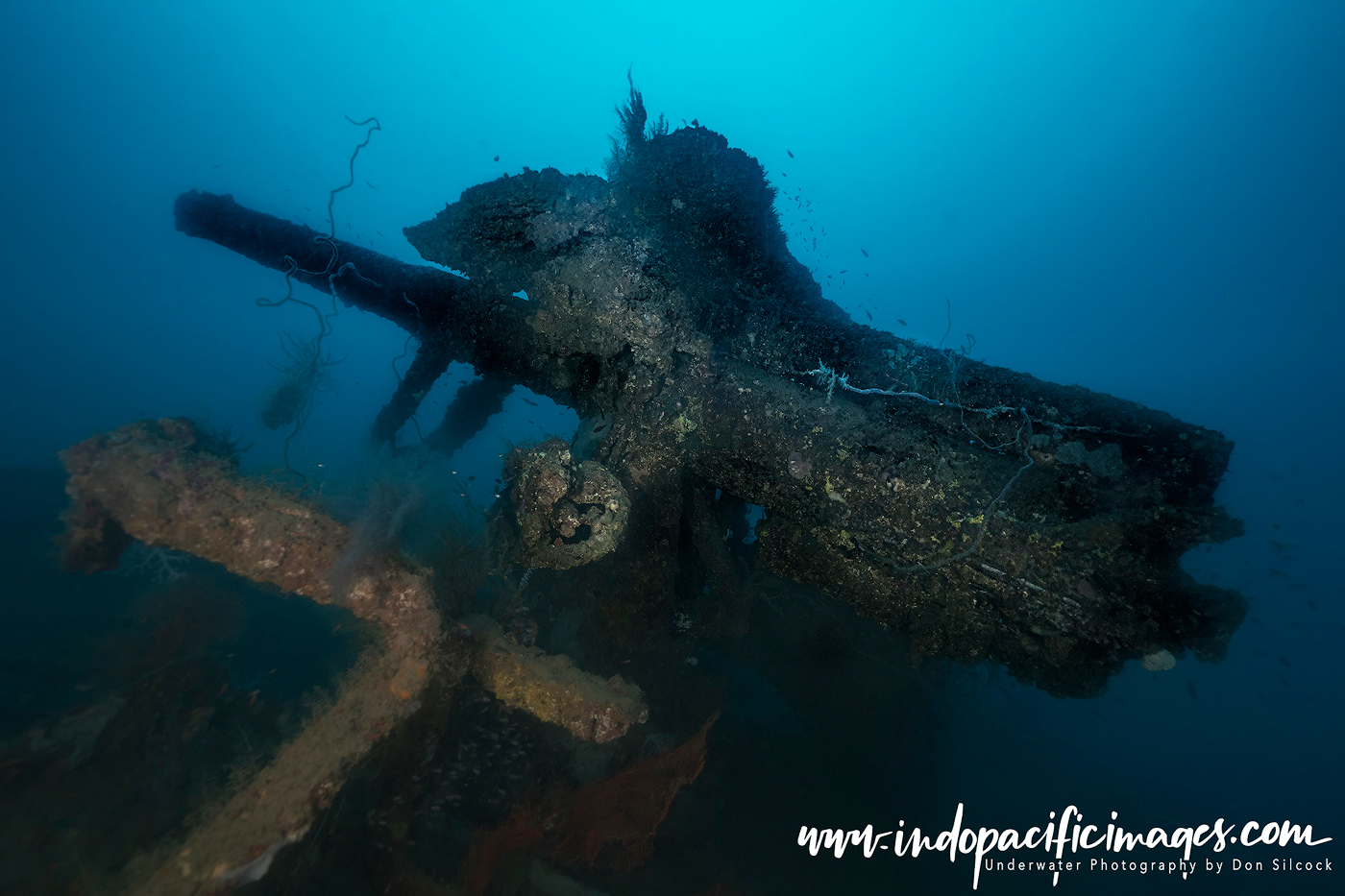
Catalina: Almost 1300 aircraft were lost during the Solomons campaign. And the Florida Islands has some great examples from both sides – starting with the Catalina wreck
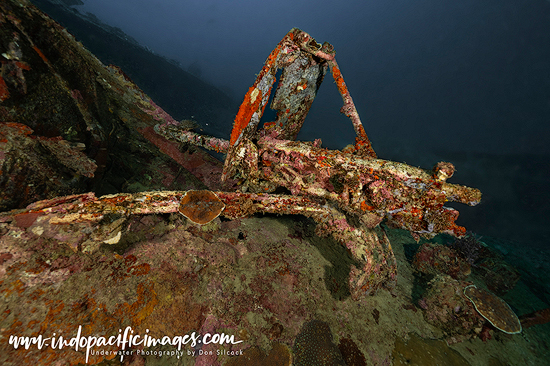 The Consolidated Aircraft Model 28 was a much-loved aircraft in WWII. Commonly known as the PBY Catalina it was robust, reliable and multi-functional. Serving equally well as a maritime patrol, bomber, or search and rescue, seaplane. It was the latter role that endeared it to many as Catalinas saved the lives of numerous pilots and crew during WWII.
The Consolidated Aircraft Model 28 was a much-loved aircraft in WWII. Commonly known as the PBY Catalina it was robust, reliable and multi-functional. Serving equally well as a maritime patrol, bomber, or search and rescue, seaplane. It was the latter role that endeared it to many as Catalinas saved the lives of numerous pilots and crew during WWII.
The Catalina wreck is just off the southeast tip of Tulagi. And is believed to have struck a small boat while landing at night in November 1943, after retrieving a downed airman.
Flipped onto its back by the impact, the crew and rescued pilot managed to escape the damaged aircraft before it sank. Righting itself on descent and coming to rest with the nose in 26m and tailplane in 34m.
As the wreck was found after the salvage era it still has all three machine guns. Plus, several boxes of ammunition scattered around the wreck.
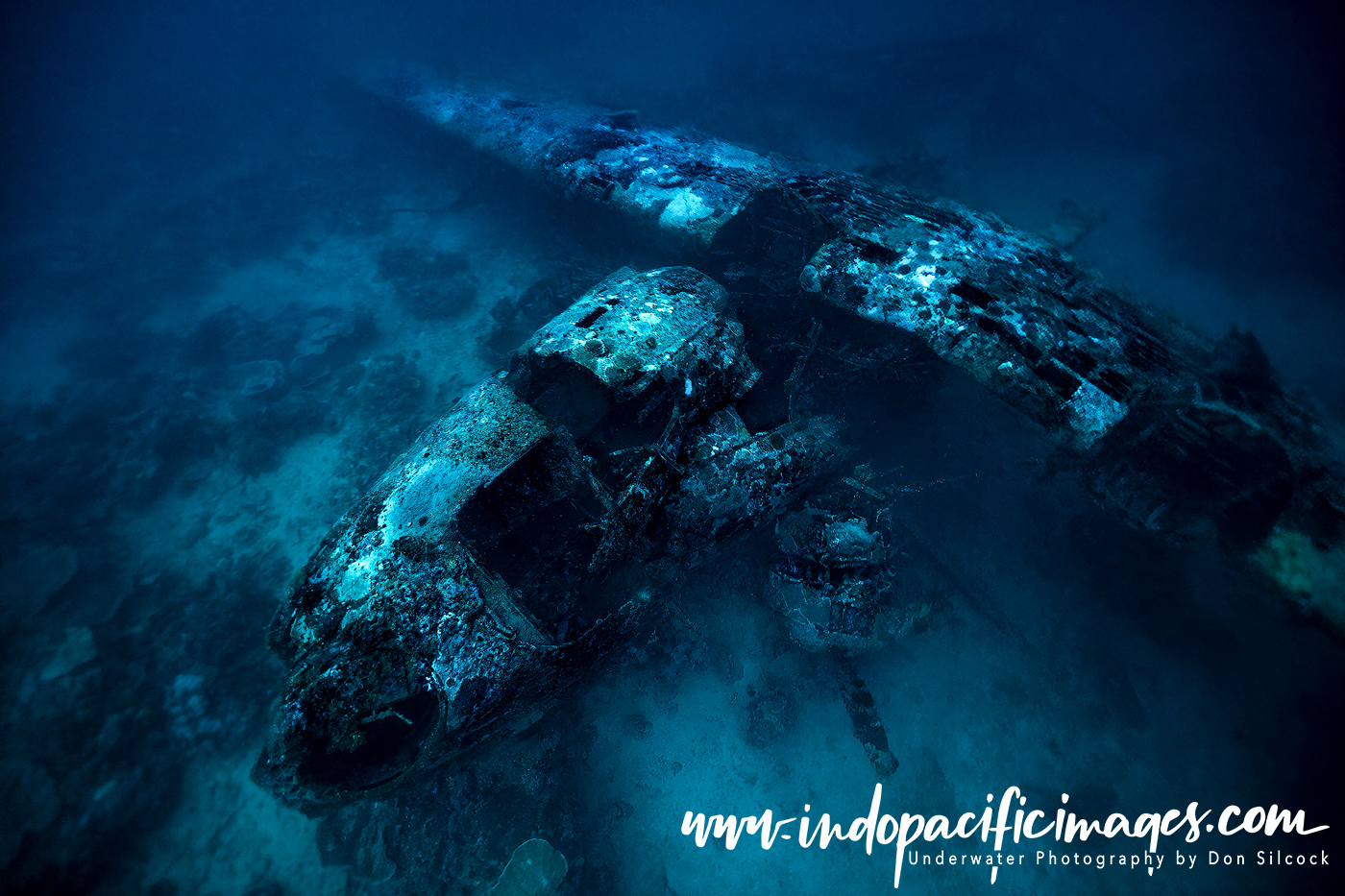
Mavis 5 and 6 Seaplanes: The Kawanishi H6K flying boat was the Japanese equivalent of the Catalina. But bigger, with four engines instead of two and much longer range.
Nicknamed “Mavis”, on the day the Allies invaded Tulagi there were seven H6K’s. Plus eight Rufe’s (amphibious Mitsubishi Zero’s) moored at Gavutu and Tanambogo Islands, near Tulagi.
A surprise dawn air raid by F4F Wildcats destroyed all 15 aircraft. All of those Rufe’s were later recovered for intelligence purposes and of the 7 Mavis only 4 remain in any recognizable form.
Of those, Mavis 5 and 6 are the most intact and are both good dives with lots to see.
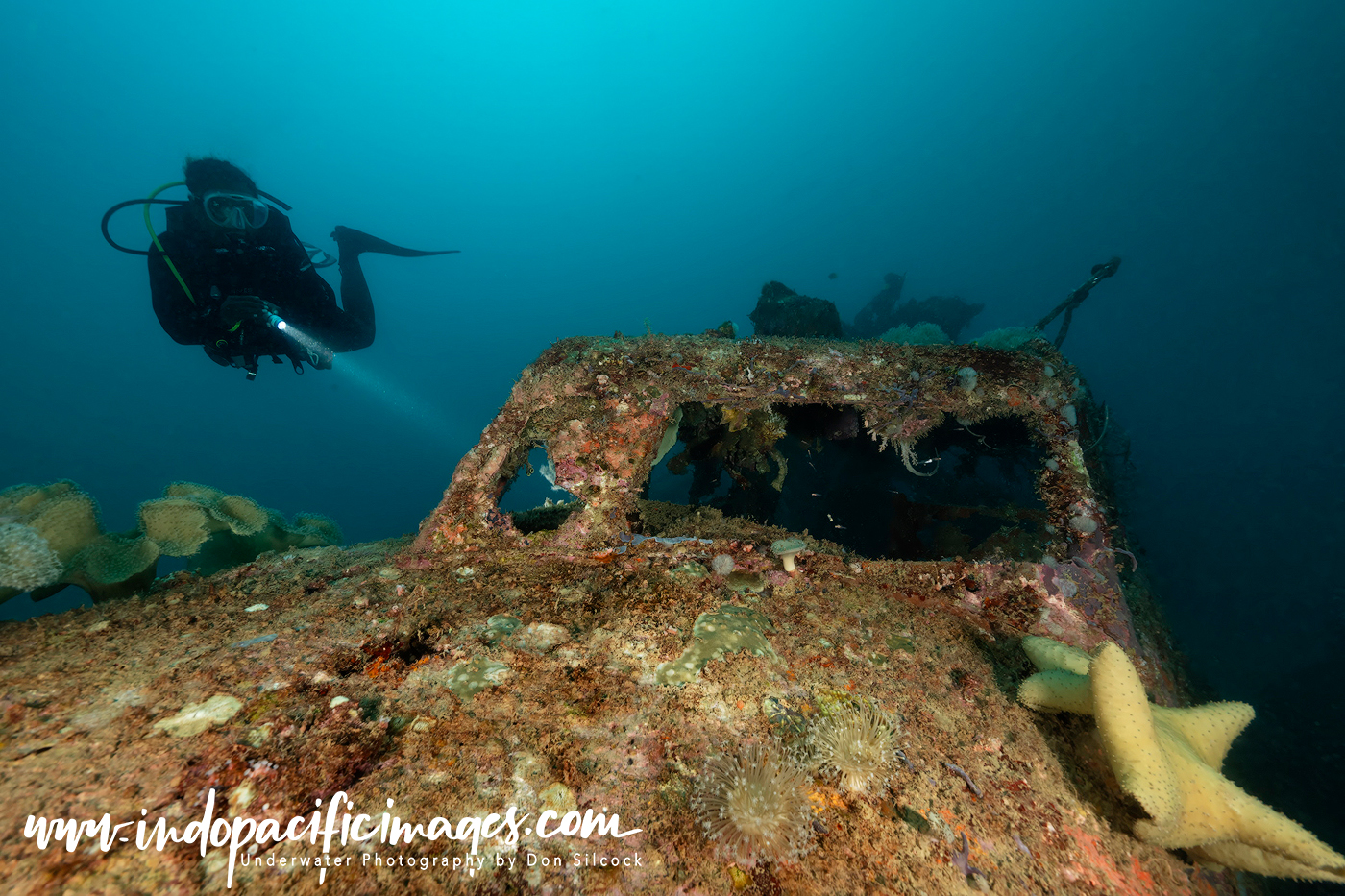
Guadalcanal
Control of the large airfield near Honiara was the key to success in the Guadalcanal campaign and Japan made several attempts to retake the area.
In total, three major land battles, seven large naval battles and almost daily aerial battles were fought in late 1942. Culminating in the decisive Battle of Guadalcanal. In December, the Japanese abandoned efforts to retake Guadalcanal and evacuated their remaining forces.
I-1 Submarine: First launched in 1924 the I-1 returned to service with the 6th fleet in November 1941. Arriving in the Solomons in January 1942 as part of resupply efforts the Allies called the “Tokyo Express”.
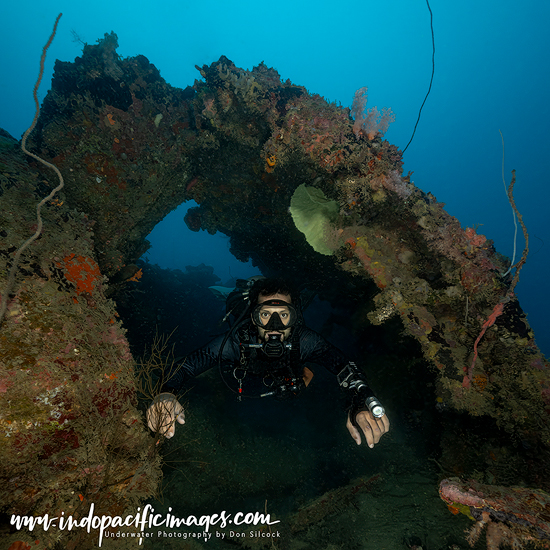 So it was that the I-1 crossed paths with the Moa and Kiwi, in a pitched battle the New Zealanders won when the Kiwi rammed the submarine three times, forcing the I-1 to run herself aground.
So it was that the I-1 crossed paths with the Moa and Kiwi, in a pitched battle the New Zealanders won when the Kiwi rammed the submarine three times, forcing the I-1 to run herself aground.
Sixty-six crew survived and when evacuated to Rabaul, their debriefing concluded that the sub’s code books were still on board.
Two attempts were made to destroy the sub. The first with depth charges from a Japanese destroyer and then by air raid.
But US Army officers had already found the code books. Enabling the decoding of messages indicating Admiral Isoroku Yamamoto, the architect of the Japanese battle plans, would conduct an inspection of an airfield on Bougainville.
Four P38 Lightnings were dispatched to down Yamamoto’s aircraft and his death became a pivotal point in the Pacific war.
The attempts to destroy the I-1, and the damage done salvaging its high-quality metals, mean that parts of it are no longer recognizable.
But others are and, at almost 100m in length, it’s a fascinating dive!
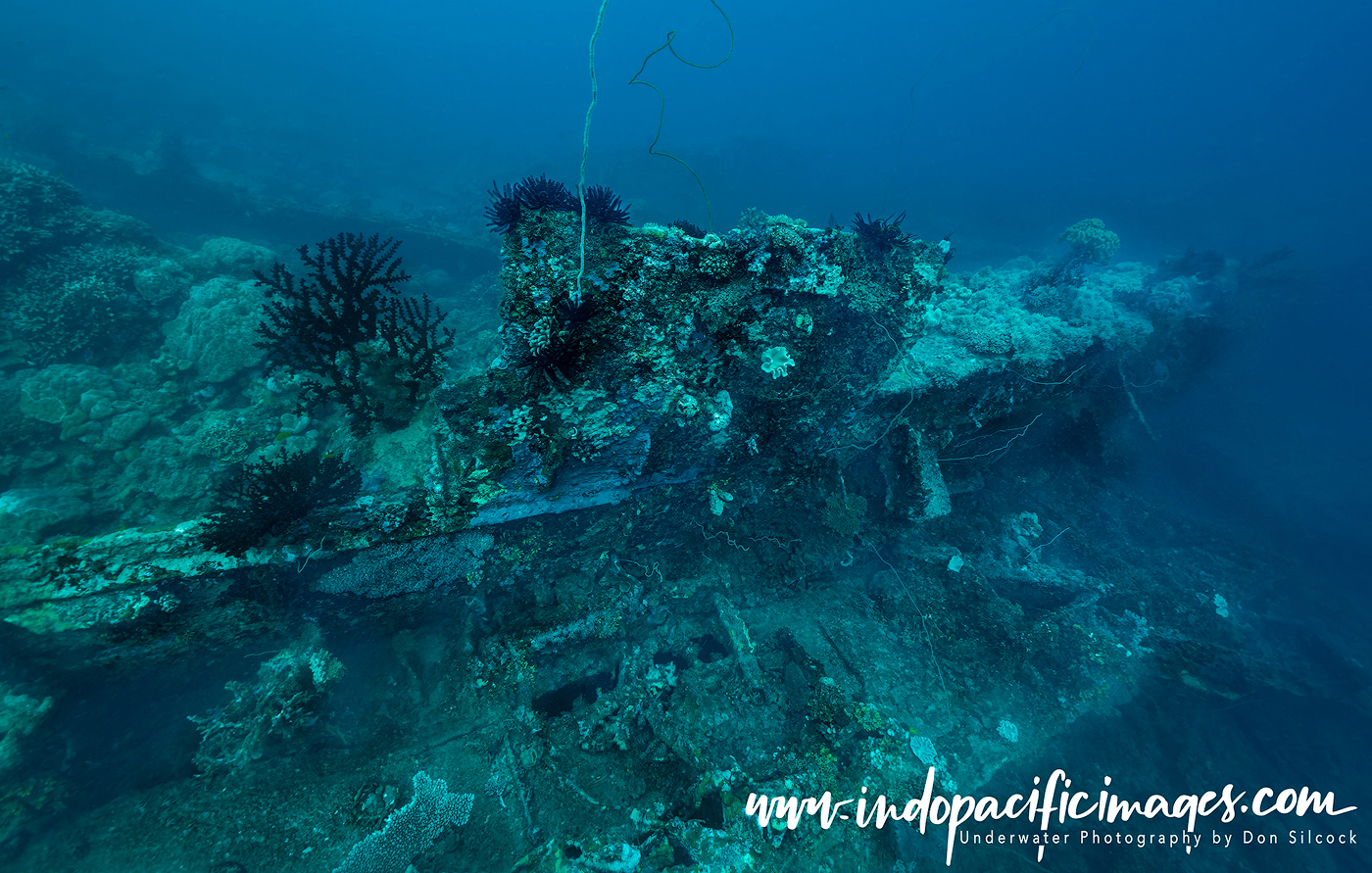
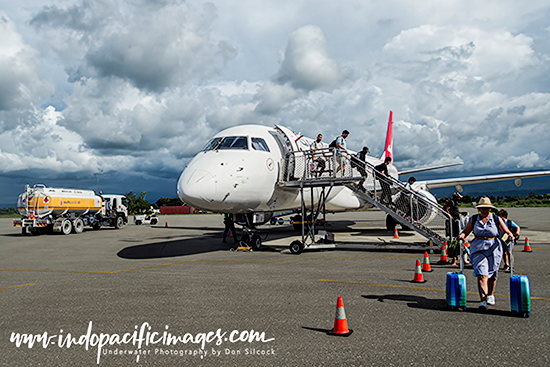
Diving the Solomon Islands WWII Wrecks – Logistics
The Solomon Islands is an interesting and very scenic country with some great diving. Getting to Honiara, the capital and main point of entry for international flights is quite easy as there are regular flights with both Qantas and Solomon Airlines from Brisbane.
But… getting to your final destination is less so as Solomon Airlines is the only choice for domestic flights and they border on the Kafkaesque at times!
Internal flights seem to be constantly rescheduled at the last moment and complete cancellations add to the overall drama! Plus, the arrival times into Honiara mean that an overnight stay is often necessary, adding to the overall cost of the trip.
The Master Liveaboards Wreck Week starts and ends in Honiara and is scheduled around international arrival and departures – so the overall trip is much more efficient time-wise.
Diving the Solomon Islands WWII Wrecks – In Summary
If you like WWII wrecks, then a Wreck Week trip is a must! The number and variety of recreational diving sites is hard to beat and I have only written about less than half of those I dived!
PNG also has a variety of WWII wrecks, but the closest thing to the Solomons trip would be Kavieng’s aircraft wrecks. While Truk Lagoon has even more wrecks, but it’s much harder to get to…
Personally, I loved the trip and the exposure to a critical part of the Pacific War. And I am now looking to dive those deeper wrecks using my recently acquired tech diving skills!
Diving the Solomon Islands WWII Wrecks – Scuba Diver Article
Scuba Diver magazine have just published a five-page article of mine on Diving the Solomon Islands WWII Wrecks, which you can download using the link provided.
